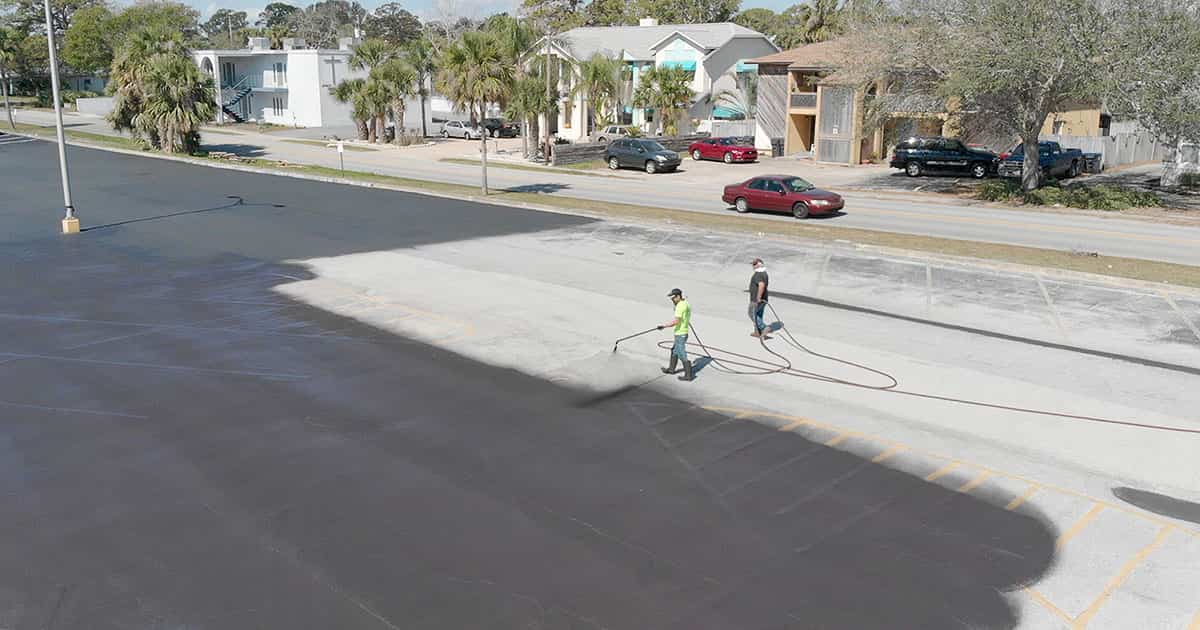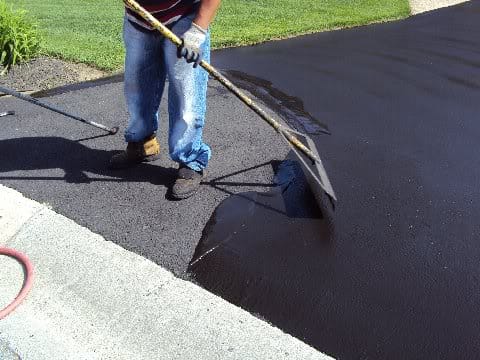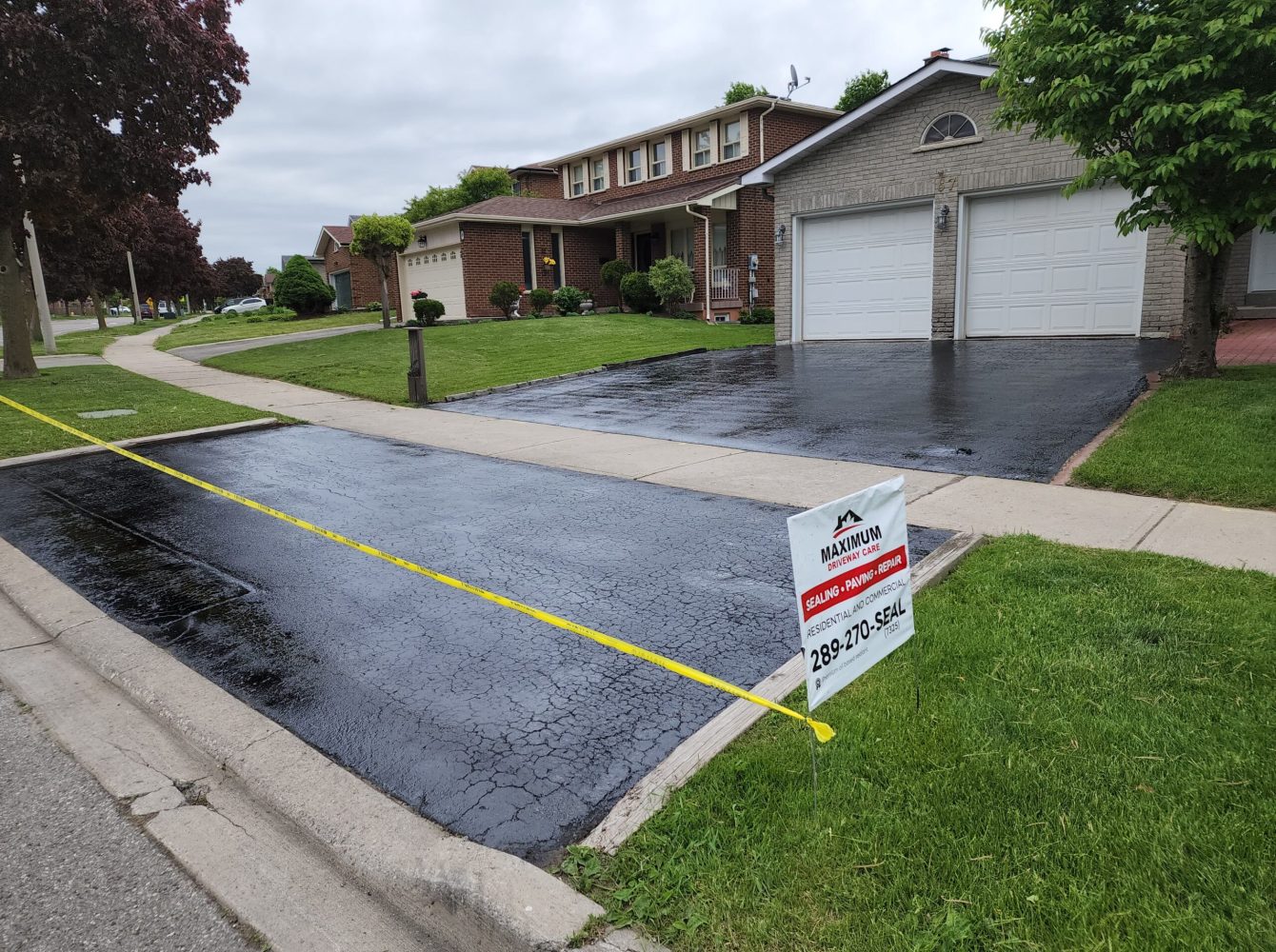Boost Commercial Appeal: Warm Mix Asphalt Sealing for Angled Parking Lots
Boost Commercial Appeal: Warm Mix Asphalt Sealing for Angled Parking Lots
Blog Article
Hot Mix Asphalt: A Lasting Solution for Pavement
Hot Mix Asphalt (HMA) has arised as a leading lasting choice for pavement services, providing a myriad of environmental advantages and cutting-edge modern technologies. As the need for eco-friendly building methods grows, checking out the subtleties of HMA's sustainability can provide important insights into the future of sidewalk remedies.
Ecological Benefits of Warm Mix Asphalt

Furthermore, Warm Mix Asphalt helps to minimize metropolitan warm island effects. Its dark color soaks up sunshine, lowering the amount of warmth showed back right into the ambience contrasted to lighter-colored sidewalks. This can lower ambient temperature levels in metropolitan areas, reducing the need for air conditioning and eventually minimizing energy consumption.
On top of that, Warm Mix Asphalt contributes to boosted stormwater administration. Its permeable nature allows water to penetrate the sidewalk and reenergize groundwater supplies, reducing runoff and the threat of flooding. These ecological benefits make Hot Mix Asphalt a sustainable selection for leading roadways and highways.
Power Effectiveness in HMA Production
Is power performance a critical factor in the production of Hot Mix Asphalt (HMA)? Absolutely. Energy plays a considerable role in the production of HMA, affecting both price and ecological sustainability. One essential element of power effectiveness in HMA manufacturing is making use of warm mix asphalt (WMA) modern technologies (angled parking). WMA enables the blending and placement of asphalt at reduced temperatures contrasted to conventional warm mix asphalt, causing lowered energy usage during manufacturing. This procedure not only reduces gas usage however also reduces greenhouse gas emissions, making it an extra eco-friendly option.
Moreover, advancements in plant modern technologies have actually brought about more energy-efficient HMA production procedures. Modern plants are created with features like recycled asphalt pavement (RAP) handling abilities, effective burner systems, and improved insulation, all adding to energy cost savings. By optimizing energy use in HMA manufacturing, the market can lower its carbon impact while keeping top notch pavement products. Energy efficiency is, consequently, an essential factor to consider in guaranteeing the sustainability of Warm Mix Asphalt manufacturing.
Recyclability of Warm Mix Asphalt
The recyclability of Hot Mix Asphalt (HMA) is a critical aspect of its sustainability and long-term ecological impact. HMA is just one of one of the most recycled products in the United States, with over 100 million tons of recovered asphalt sidewalk (RAP) being recycled every year in brand-new sidewalk construction. Recycling HMA supplies numerous environmental advantages, such as reducing the demand for virgin materials, lowering power consumption during production, and lowering the amount of waste sent to garbage dumps.
The process of recycling HMA entails grating the existing sidewalk, crushing it into smaller sized items, and mixing it with new aggregate and asphalt binder to create a recycled mix. On the whole, the recyclability of HMA plays a substantial function in promoting lasting techniques within the sidewalk industry.

Long-Term Performance of HMA
Asphalt pavements show toughness and durability over a prolonged duration, reflecting the long-lasting efficiency of Hot Mix Asphalt (HMA) The long life of HMA can be associated to its capacity to withstand have a peek at this site heavy traffic lots, harsh weather problems, and the impacts of aging. Research studies have shown that well-designed and correctly built HMA sidewalks can last for two decades or more with routine upkeep. The secret to taking full advantage of the long-term efficiency of HMA hinges on utilizing premium materials, adhering to best techniques in building and construction, and executing efficient upkeep methods. Correct drain, routine assessments, and prompt repairs are important for preserving the structural honesty of HMA sidewalks over time. Furthermore, advancements in HMA technology, such as making use of polymer-modified binders and warm mix asphalt, have actually better improved the resilience and long life of HMA pavements. By focusing on high quality building and upkeep practices, HMA remains to show itself as a affordable and lasting service for lasting sidewalk facilities.

HMA: Longevity and Sustainability
Demonstrating both toughness and sustainability, Warm Mix Asphalt (HMA) has ended up being a foundation in the building and construction of resilient pavement infrastructures - angled parking. HMA's longevity stems from its capacity to hold up against hefty tons, extreme weather, and high website traffic quantities, making it a reputable selection for streets, highways, and airport terminal paths. The make-up of HMA, which generally consists of accumulations, binder, and filler, plays an important function in enhancing its longevity and resistance to tear and use
Additionally, HMA's sustainability lies in its recyclability and energy-efficient manufacturing process. The capability to reuse reclaimed asphalt sidewalk (RAP) in new HMA combinations minimizes the demand for virgin products and lessens the environmental effect of pavement construction and maintenance. Furthermore, the power effectiveness of producing HMA exists in its reduced mixing temperatures contrasted to other pavement materials, bring about reduced power intake and greenhouse gas discharges.
Conclusion
In final thought, warm mix asphalt (HMA) provides a sustainable service for pavement with its ecologically friendly attributes. HMA's recyclability, energy efficiency in production, and lasting sturdiness make it an eco-friendly choice for roadway building.
HMA is one of the most recycled products in the United States, with over 100 million bunches of recovered asphalt pavement (RAP) being recycled every year in new sidewalk building and construction.The process of recycling HMA involves crushing the existing pavement, crushing it into smaller items, and mixing it with new aggregate and asphalt binder to he said develop a recycled mix.Asphalt pavements show toughness and resilience over an extensive duration, reflecting the long-lasting efficiency of Hot Mix Asphalt (HMA) Furthermore, improvements in HMA technology, such as the use of polymer-modified binders and cozy mix asphalt, have even more improved the toughness and longevity of HMA sidewalks. The capability to recycle redeemed asphalt sidewalk (RAP) in new go now HMA mixtures minimizes the demand for virgin products and lessens the ecological effect of sidewalk building and maintenance.
Report this page